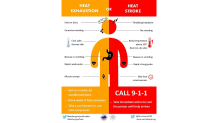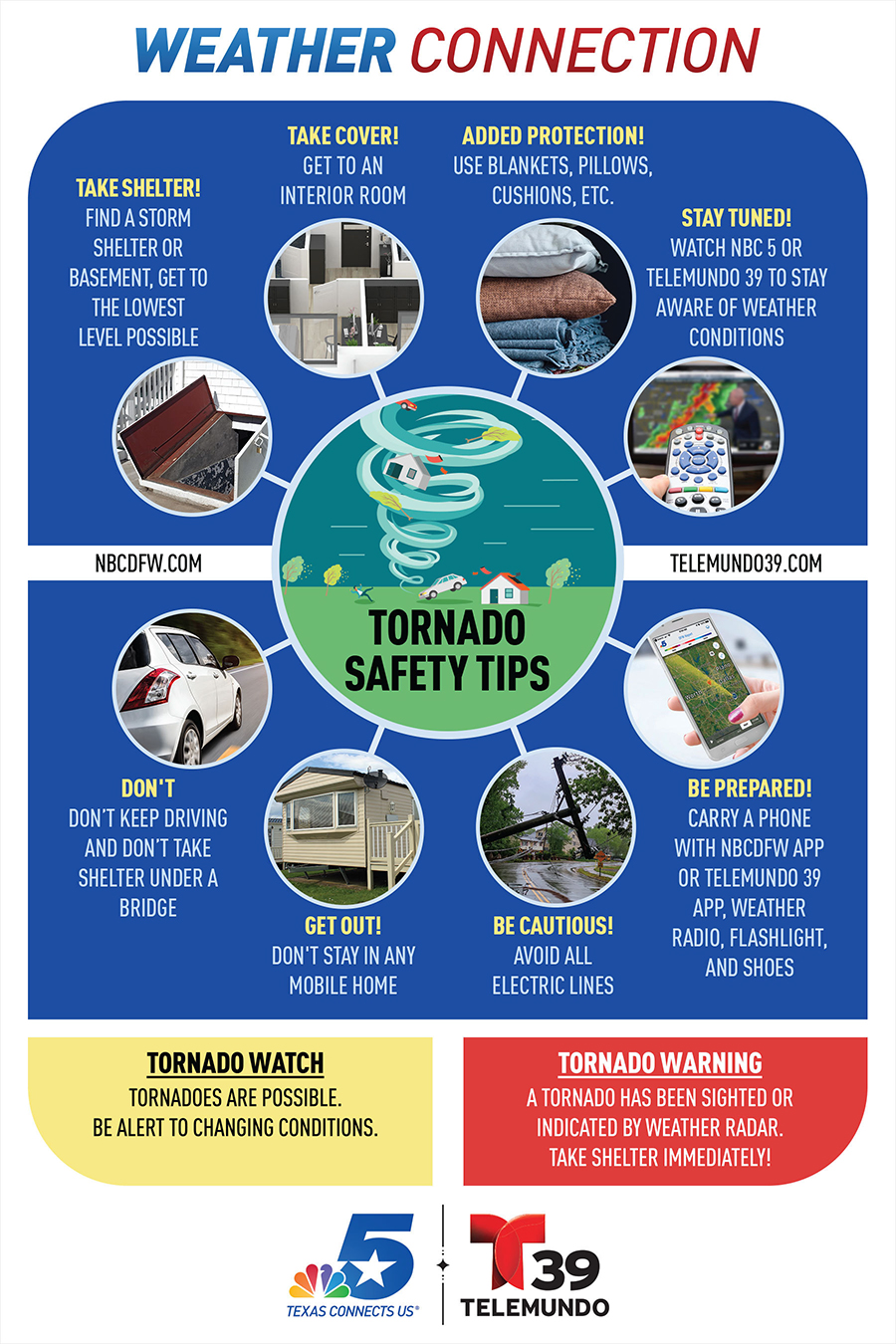As the temperatures pushed 110 degrees Monday, paramedics across North Texas were busy responding to people in distress.
MedStar, which serves the Tarrant County area, says 14 patients were transported to local hospitals for heat-related illnesses. All of the calls took place between noon and 8 p.m., the hottest part of the day.
Two were in serious condition and another one was critical. The ages of patients range from 16 to 78.
One of the critical cases in the past two days was an elderly patient found at home by the family after two days of no contact, which is why MedStar says it’s important to check on homebound loved ones and neighbors.
Get DFW local news, weather forecasts and entertainment stories to your inbox. Sign up for NBC DFW newsletters.
Another incident involved a teenage girl who was outside during a funeral when she started to sway and then fainted. MedStar said she had been outside in the heat for close to 2 hours and did not have much water intake throughout the day.
Another man who had been outside all day working on his motorcycle and came inside because he was feeling funny. His wife told MedStar she is not sure how much water he drank.
In total, MedStar data shows more than 500 heat-related patient responses in the last two months, which is double the number from last year.
Local
The latest news from around North Texas.
Representatives with Parkland Hospital said they are also seeing an uptick in heat-related patients compared to years past.
The hospital has had a total of 79 patients come in for heat illness over the last two months, compared to just 32 last summer.
These cases are prime examples of how quickly the heat can take a toll on the human body.
RECOGNIZE SIGNS OF HEAT ILLNESS AND HEATSTROKE
According to Medstar, heat exhaustion occurs when the body loses large amounts of water and salt through excessive sweating, particularly through hard physical labor or exercise. This loss of essential fluids can disturb circulation and interfere with brain function. Symptoms of heat exhaustion may include muscle cramps, paleness, sweating, nausea, and vomiting.
Children and the elderly are especially susceptible.
Heatstroke takes those symptoms a step further. It’s a life-threatening problem that occurs when the body suffers from long, intense exposure to heat and loses its ability to cool itself.
The cases seen in North Texas this week are prime examples of how quickly the heat can take a toll on the human body.
"This is a very hot summer, and we have a lot more of it coming. So I just want everybody to be mindful of that,” said Dr. Fahmi Farah, a cardiologist, and director of Bentley Heart Medical Center in Fort Worth.
She said bottom line, bodies aren't built for this heat, no matter your age or how fit you are.
“It can affect anybody at any age group, babies are very susceptible. Infants should not be left in cars so parents have to be very careful,” she said. “It can affect toddlers, teenagers, young adults, and definitely older adults. So really, nobody's immune from getting a heatstroke."
Dr. Farah said she has observed many people are not drinking enough water, which can bring on heatstroke much more quickly. That is one of her biggest concerns right now.
"Heatstroke is a very serious thing. It's when our internal body temperature rises to above 104. And when that happens, we can sustain serious damage to our internal organs,” she said. “And it could be any one of those organs like the kidneys, the liver, our heart, and even neurological symptoms can occur. So it is worrisome."
It's most common when temperatures hit 104 degrees or higher, like the weather that’s impacting much of Texas this week.
At those high temperatures, doctors say your organs are literally being cooked which can lead to all kinds of problems including cardiac arrest.
"If they're exposed in the outdoors, some of the signs of heatstroke can have can be nausea, vomiting -- but also neurological symptoms. They can become confused, people can pass out,” said Dr. Farah.

Here is a list of the signs of heat illness or heatstroke to look out for this week:
- Headache
- Dizziness and confusion
- Loss of appetite and feeling sick
- Excessive sweating (if exercising)
- In hot weather cases, skin becomes hot and dry to touch
- Pale, clammy skin
- Cramps in the arms, legs and stomach
- Fast breathing or pulse
- Fever, body temperature of 104 degrees
- Being very thirsty
Any of these symptoms can occur within minutes to hours, depending on the person, how much water they’ve had to drink, and how much time they’ve spent outdoors.
Doctors are telling families to keep outdoor activities for kids to the early morning or evening hours if possible. Young children especially have a tough time regulating that heat in their bodies and can fall victim to heat illness quicker.
So far this summer, Medstar said they have responded to nine cases of children left in hot cars.
The elderly are also susceptible to heat-related illnesses.
If you think a person may be experiencing heatstroke, seek immediate medical help and call 911.
Here are some things doctors say you can do to cool the overheated person while waiting for emergency treatment, according to the Mayo Clinic:
- Get the person into shade or indoors.
- Remove excess clothing.
- Cool the person with whatever means available — put in a cool tub of water or a cool shower, spray with a garden hose, sponge with cool water, fan while misting with cool water, or place ice packs or cold, wet towels on the person's head, neck, armpits and groin.
FINDING RELIEF
To prevent heat illness and heatstroke, MedStar recommends the following:
Hydrate: Drink plenty of water during the day, especially if you are engaged in any strenuous activity. Sports drinks are a good choice if you’re exercising or working in hot conditions, but water is a good way to hydrate as well.
Ventilate: Stay in a place where there is plenty of air circulating to keep your body cool. If you are indoors and don’t have access to air conditioning, open windows and use a fan.
Cover Up: Wear light-colored and loose-fitting clothing to avoid absorbing the sun’s light and trapping heat. Wear a hat to shield yourself from the sun, but once you feel yourself getting warm, remove any items covering your head which can trap heat close to your body.
Limit Activity: Heatstroke can occur in less than an hour when you are participating in strenuous activity during a hot day. If you feel yourself getting hot or light-headed, stop your activity and rest in a cool place out of the sun. Be sure to drink water or a sports drink before, during, and after any strenuous activity.
Check on Loved One’s: The elderly are especially vulnerable to heat related emergencies. Many elderly residents are not aware of how hot it may get in their residence. Call on older friends and family members regularly to assure they are doing OK.
The city of Dallas has designated 30 libraries and many recreation centers as cooling stations for people who need relief. All 30 Dallas Public Library locations are open during normal business hours and can be used as cooling stations. To get a complete list of locations and hours, click here.
The City of Dallas Office of Emergency Management (OEM) has distributed water bottles to cooling centers.
There are also programs to assist people who need A/C units.
Dallas County Comprehensive Energy Assistance Program: This program provides free A/C window units to low-income Dallas County residents. Residents that are interested in applying must call to make an appointment at 214-819-1909 and 214-819-1976. More information about the program can be found by clicking here.
Cornerstone Baptist Church Free A/C Program: Individuals interested in this program can follow this link to submit an application. If individuals do not have access to the internet to complete the form, they may call 214-854-0162.
CONTINUING WEATHER COVERAGE
Stay up to date with the latest weather forecast from NBC 5's team of Weather Experts by clicking here or by watching the video below.

Be prepared for your day and week ahead. Sign up for our weather newsletter.




